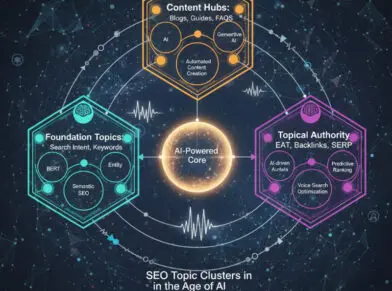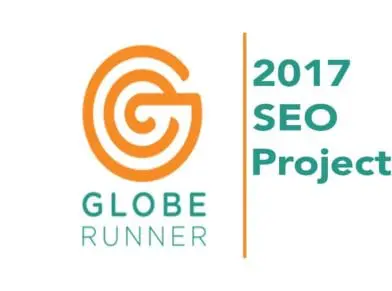KEYWORD & ON-PAGE BEST SEO PRACTICES FOR 2017

Each year Google algorithms grow and change, and keep Internet marketers on their toes for the latest updates. As the industry transforms, so should your practices, and skills.
Before you jump headfirst into the New Year, it’s best to brush up on what the latest trends, and practices are for your SEO page optimization. Following along closely with the most recent updates, here are a few easy tactics you can use in order to maintain the best and most efficient on-page and keyword practices for the start of 2017!
Keyword Research
1) Prepare A List
Just like any other project or assignment, compiling a list ahead of time will only help to make the planning process easier, and maintain organization. Jot down as many keywords as you can think of that you want to rank for. Your keywords should include a thick list of searches that your customers would use to find your page. It’s best to also involve keywords that revolve around specific products and/or services that your business provides in order to lead customers to your page. This will help to narrow search results down to your company, and lead customers to better results that specify what your business provides and stands for.
2) Take Advantage Of Auto-Suggest
Auto suggested keywords are just as important as those that you come up with yourself. This tool also helps to generate ideas while you’re making a list if you find yourself stuck and unable to come up with new keywords. If you’re unfamiliar with the auto-suggest tool, it is a simple feature that will automatically generate new ideas once you start typing in a word. These often show you what people are already searching for, and can lead you to more creative and complex keywords. Auto suggest is an easy way for you to enhance your keyword research and improve SEO.
3) Understand Your Audience
If you’re truly trying to enhance your page using keyword practices, it’s important to understand what your audience is interested in, and help them answer any questions they have. The feedback and questions that your audience is asking about a particular product or service when pertaining to your business, can be an easy way for you to create a blog post, or enhance the FAQ sections on your site. A little research goes a long way, and truly targeting the precise information that people are already searching for regarding your business, will only make it easier to enhance the content that currently exists, and add to the exact information that is key for your search rankings.
4) Monitor Your Rankings
One of the best ways to engage in proper SEO practices is to download your keywords and monitor their current rankings. Once you have all the data you need, take some time to fully understand and analyze your rankings. Do you have keywords ranking on the first and second page? Take a look at the pages that are ranking for those keywords, and see if there is any way you can improve or increase the rankings. Simple solutions to SEO rankings could simply be adding more content to your site, updating current title tags, or heading tags.
On-Page Practices & Advice
1) Title Tag
This tag is considered one of the most important when it comes to your pages’ SEO. Title tags are used as the primary means of explaining the document itself, and will appear within the browser, search engine results pages, and external sites. Since this is such an important aspect to the success of your SEO, there are a few suggested practices you should take into consideration when creating your title tag. Keep the tag short and sweet, between 50-60 characters. The more characters it has, the chances are that the search engines will cut off part of the title. It’s recommended to use keywords at the beginning of the tag, and brand names towards the end to optimize ranking results. Don’t forget to get creative, and write a title that will really stand out to a user and grab their attention!
2) Meta Descriptions
Meta descriptions are still important, especially for increasing click-through on search engine result pages, also known as (SERPs). The meta description carefully uses keywords to form a short excerpt to entice searchers to click on the site. Keep in mind that the meta description should not be confused with the meta keywords tag, which is no longer recommended. It should be catchy, yet informative, and quick to read. Readers will find that the meta description will easily tell you what the business is about, or what types of products or services they have, and will be enough to encourage them to click on the page.

3) Alt Tags
Alt tags are a type of HTML attribute that is used with image tags to help search engines better understand the purpose of the image. Images are crucial for many people when visiting a site, and are sometimes the primary reason why they are on the page in the first place. Since search engines cannot interpret the true importance or significance of an image within a blog, webpage, or text, then the alt tag provides the search engine with the information it needs to read it. Alt tags are also known as, “alt attributes” or “alt descriptions”, and can be used on pictures, such as product images. When an alt tag is used on a product image, the ecommerce site will see an increase in search engine rankings.
4) Internal Links
An easy way to enhance your sites SEO practices, while also promoting your own work, is to include internal links in your content. Internal links are considered links that take you to another page on the same domain you’re already on. For example: if you’re visiting a blog site that features recipes, and you’re reading an apple pie recipe, the blogger might include a link using the word “apples” that takes you to another apple recipe on the same site. This type of linking will help to build your site structure, and increase ranking by enhancing the overall flow of the site. Since the content already exists on your page, it’s very simple to include multiple links, and is a sure way to make your site structure rich and in-depth. Although you might think more links are better, it’s best not to overwhelm the reader with too many. Keep it to a happy medium, and try to space out the internal links throughout the entire page of content. Too many internal links can get cluttered, and could potentially make the reader unhappy, and want to leave your site.
5) H1/H2 Tags
These headers differentiate from others as they are often the first thing that some readers see on the page. Since they have a nice, bold style that stands out, H1, H2, and headers enhance your page format, and separate the paragraphs on your page in a clean and organized way. It’s more important to include your keywords within H1 or heading tags rather than within the content itself, as this improves rankings and SEO results. The simple combination of relevant content, with SEO keywords in a bolded, larger, and more distinct font is the perfect way to catch your readers’ attention, and make them more likely to engage or click on your post. The H1 tag is the most effective, so you’ll want to truly target your main keyword when using it. H2, H3, and other H tags are good to use as well, but are not as effective as the H1. It’s important to include keywords in the following H tags, but the H1 should be your primary focus when building a new page, and should be structured to pertain to the interest of your audience.
6) Schema
Schema or schema.org, is a highly effective way you can upgrade your SEO by implementing vocabulary tags into your HTML, thus improving your SERPs. How exactly does it work? Google, Bing, Yahoo!, and Yandex collaborated to provide the most ideal way to markup your HTML in order to receive the most efficient search engine results. By simply adding or enhancing your rich snippets located under your page title, it improves your page visibility in SERPs. This type of structured data is versatile for many different types of SEO purposes. For the best practices, you can use Schema to markup various content, such as recipes, events, places, products, etc. For example: if you’re describing a book you can mark it up with properties, such as title, ISBN, author, etc. Although there is not solid evidence that supports Schema affecting rankings, it is valuable to your SEO, and is linked to improving click-through on SERPs. Readers understand the importance of detail, and the more informative a page is, the more likely a reader will want to return to the page since it provides what the reader is searching for. This is where schema comes into play, and helps to fill out missing details on your page, that not only help improve your SEO, but make the page more appealing to an audience.

7) Page Load Speed
We have all experienced a webpage that takes too long to load, and instead of waiting patiently, moved on to another search. The page load speed is important to SEO best practices, as Google uses it in their algorithm to rank pages. The slower the page speed, the less pages search engines can crawl using its specific budget. This would effectively lead to a negative impact, and affect your overall ranking. Page load speed, as stated earlier, leads to a higher bounce rate, as the user becomes impatient and leaves the page. This of course leads to a lower average time on the page itself, and negatively affects the conversion rates as well.
When gearing up for the New Year, it’s important to take some time to clean up, and organize your site. Use these practices to polish your pre-existing content and structure, and tune it to the perfect combination of SEO practices that will have your site leading in ranking in no time!



















